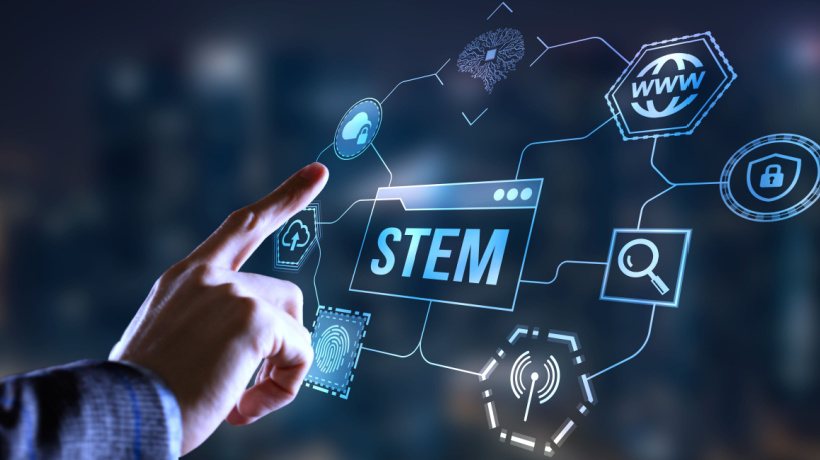eLearning For STEM Education: Can It Be Of Use?
The amount of information generated daily by consumers and businesses is growing exponentially. As a result, today's educators are increasingly recognizing how important it is that advancing students know how to work with new technologies that are built on STEM disciplines. In fact, many teachers are starting to implement technological innovations in the classroom to inspire and engage students.
Case in point, eLearning is an empowering resource that teachers use to deliver quality, cost-effective training. Education advocates believe that eLearning tools are essential for providing students with current information and enhanced curriculums, as well as delivering well-rounded lessons. From urban to rural classrooms, eLearning is an increasingly vital resource for educators and students.
Importance Of STEM Education
Many people think of lab coats and highly complex technologies when they hear the word STEM. In reality, however, STEM sciences are the framework for vital institutions that society cannot live without – such as manufacturing, food production, and healthcare.
Today, people are heavily reliant on STEM-based professions. STEM specialists use their science, technology, engineering and math skills to manage and improve important aspects of life, such as the nation’s economy and population health outcomes.
There’s been a multitude of articles published about the importance of STEM education. Despite this, it seems that people aren't getting the message. In 2018, nearly two and a half million STEM jobs went unfilled. Furthermore, minorities are woefully underrepresented in the field as are women, particularly in STEM executive roles where men are 70% more likely to hold these positions.
If people truly understood the message that countless professionals and educators have been trying to share, these disparities wouldn't exist. Unfortunately, even with the many messages that advocates for STEM science have shared with the public, many people still don’t fully grasp the importance of them.
More needs to be done in regard to getting the message about the importance of the STEM sciences to discipline out to parents and students. In short, parents and others who aren't well versed on the importance of STEM education can't very well share that knowledge with the nation’s up and coming youth.
eLearning For STEM
As technology advances, young generations are becoming more engaged with interactive platforms. This has changed the way that students learn. In view of this, teachers who deploy eLearning resources in the classroom cater to the habits of today's technology-enabled generations.
Using eLearning teaching tools, educators can provide interactive, hands-on experiences to students for concepts that were previously abstract in the traditional classroom setting. Interactive technology helps contemporary students to learn complex STEM concepts at an early age because it’s easier for them to engage with it, increasing their understanding of intricate theories. Due to this, teachers who deploy eLearning technology in the learning environment have seen impressive increases in student learning outcomes.
In addition, eLearning technology levels the playing field and makes learning more accessible to students. Thanks to internet connectivity, students can access lessons from anywhere. The technology even inspires some students to move forward with their own independent studies.
Benefits Of eLearning For STEM
STEM advocates forecast that nearly 9 million jobs in the field were available in 2018. However, there were only 600,000 qualified job candidates in the United States during this year, according to the Bureau of Labor Statistics (BLS).
Furthermore, a recent survey conducted by the U.S. Department of Education revealed that only 16% of high school students are interested in STEM careers and perform well in mathematics. Additionally, the study revealed that only 28% of high school freshman are interested in the STEM discipline and want to go on to earn a college degree related to the field after graduation.
Unlike traditional classroom training, STEM education integrates various topics. For instance, educators normally teach subjects such as science and mathematics separately. Furthermore, young learners gain invaluable skills through STEM training, such as problem-solving. It teaches students how to frame problems as puzzles, analyze information and form their own conclusions, and fosters their creativity and innovation as they work through STEM-related lessons.
More importantly, STEM training teaches students how to work together. By participating in group learning sessions, STEM learners develop habits that prepare them for the collaborative workplace of the future. This contributes to students' academic and career success. They’re more prepared for college and likely to land jobs at the higher end of the pay scale in their chosen fields. Furthermore, those graduates will be able to help with growing and critical problems, such as cybersecurity, that require the attention of experts who possess STEM skills.
People are growing increasingly reliant on technology. As this takes place, unfortunately, they are also more vulnerable to cybersecurity threats. As engineers and researchers develop beneficial and remarkable inventions, cybercriminals have found more ways to exploit those innovations for their own benefit.
Many media accounts paint cybercriminals as highly skilled at their trade or blame cyber breaches on failed technology. More often than not, however, cyber breaches occur due to user error, rather than the proficient skill and competence of hackers. These stories intrigue readers and are exciting, but in reality, when enterprise security failures occur, company employees are more often at fault.
In light of this, coming generations must become intimately familiar with emerging technologies. Just as American roadways are safer because drivers understand the rules of the road, the digital universe will grow safer as more students advance from universities after training in STEM sciences.









